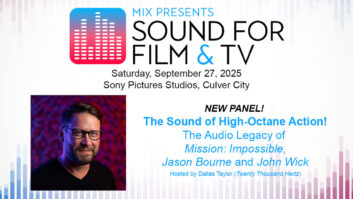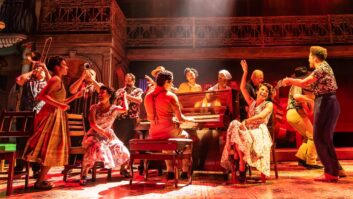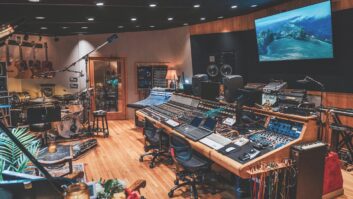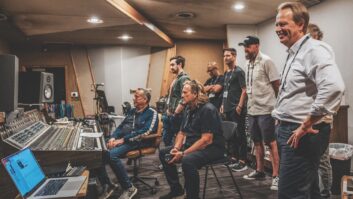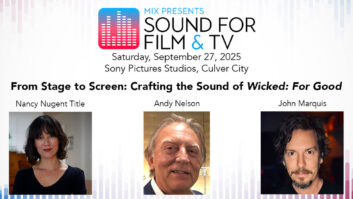By 2016, Dave Amlen had finally had it. He’d been a studio owner in New York since 1987, starting with Sound on Sound Recording, which later became Legacy in partnership with Right Track Recording and ended up as MSR after that partnership was dissolved. Amlen had certainly prospered during the boom years of the recording business in the 1990s and early 2000s; he also had witnessed the decline from up close after 9/11, dropping further after the 2008 financial meltdown.
Still, Amlen managed to keep his business viable until about 2013, when the devastating troika of the fall of the record business, the maturity of the home studio and the skyrocketing New York real estate market became too much. What finally did him in was the sound of jackhammers leaking into his control room from 7 a.m. to 11 p.m., six days a week, from the slow demolition of a building that was just feet from the outer wall of his studio in Times Square.
“We went from roughly a $2-million-a-year business down to about three-quarters of a million dollars,” Amlen says of the effect of the construction noise. “It was a huge kick in the ass.”
Feeling “battered and shell-shocked” when he finally had to shutter MSR, Amlen sold off some of his gear, put the rest in storage, and tried to figure out what to do next. “I wasn’t ready to call it quits,” he says, “so I held onto some stuff that I might need for a smaller, smarter studio in the future, which I figured was going to be in Manhattan.”
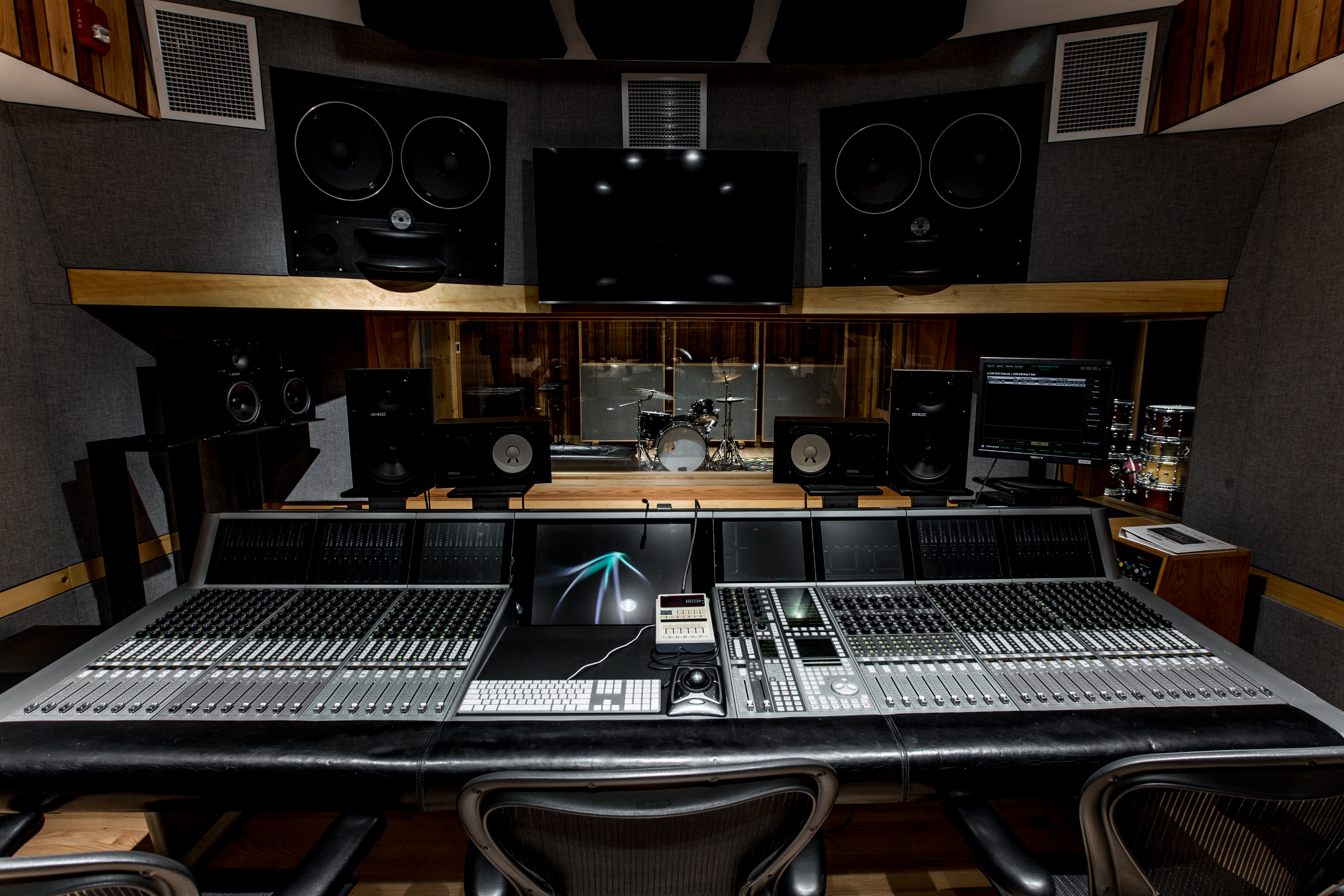
Over the River
Amlen quickly discovered that the commercial real estate market had become so inflated that there was just no way to find an affordable location in New York City with enough space to put his studio. But rather than giving up, he began to ponder the idea of building a studio in the New Jersey suburbs.
“I started to look at space and I realized that a lot of my clients came from north and north-central Jersey,” he says. “There were still clients on the Upper West Side of Manhattan, but when I talked to them informally, they told me, ‘Sure, I’ll come out to Jersey.’ I realized that the asking prices in Jersey were kind of like what they had been in New York many years ago.”
Amlen found a location in Montclair, N.J., a tree-lined suburb with a population of about 40,000, just 15 miles west of Times Square and easily accessible by car, train and bus. “We have lots of parking on premises,” Amlen explains. “We are two blocks from the Bay Street train station, which, unlike the other Montclair stations, is open on weekends. You can also take a bus from Port Authority that will literally drop you off at the corner here, on Grove Street. So you can drive, you can train, you can bus it, you can Uber and Lyft it.”
As suburbs go, Montclair has an unusually large population of creatives, including musicians, songwriters, composers and engineers. It’s full of New York City transplants, so it has a pretty sophisticated vibe and even its own highly regarded film festival.
Related: Sound on Sound Adds Studio D, by David Weiss, Oct 1, 2003
“From Maplewood all the way up through Englewood, and all the towns in between, Montclair being the most notable, you have this hotbed of creativity,” says Amlen. “So the idea of building a studio in Montclair didn’t scare me. All of the producers and engineers I talked to said, ‘We’re really positive about the idea if you build a great facility outside of New York. You’re going to have business.”
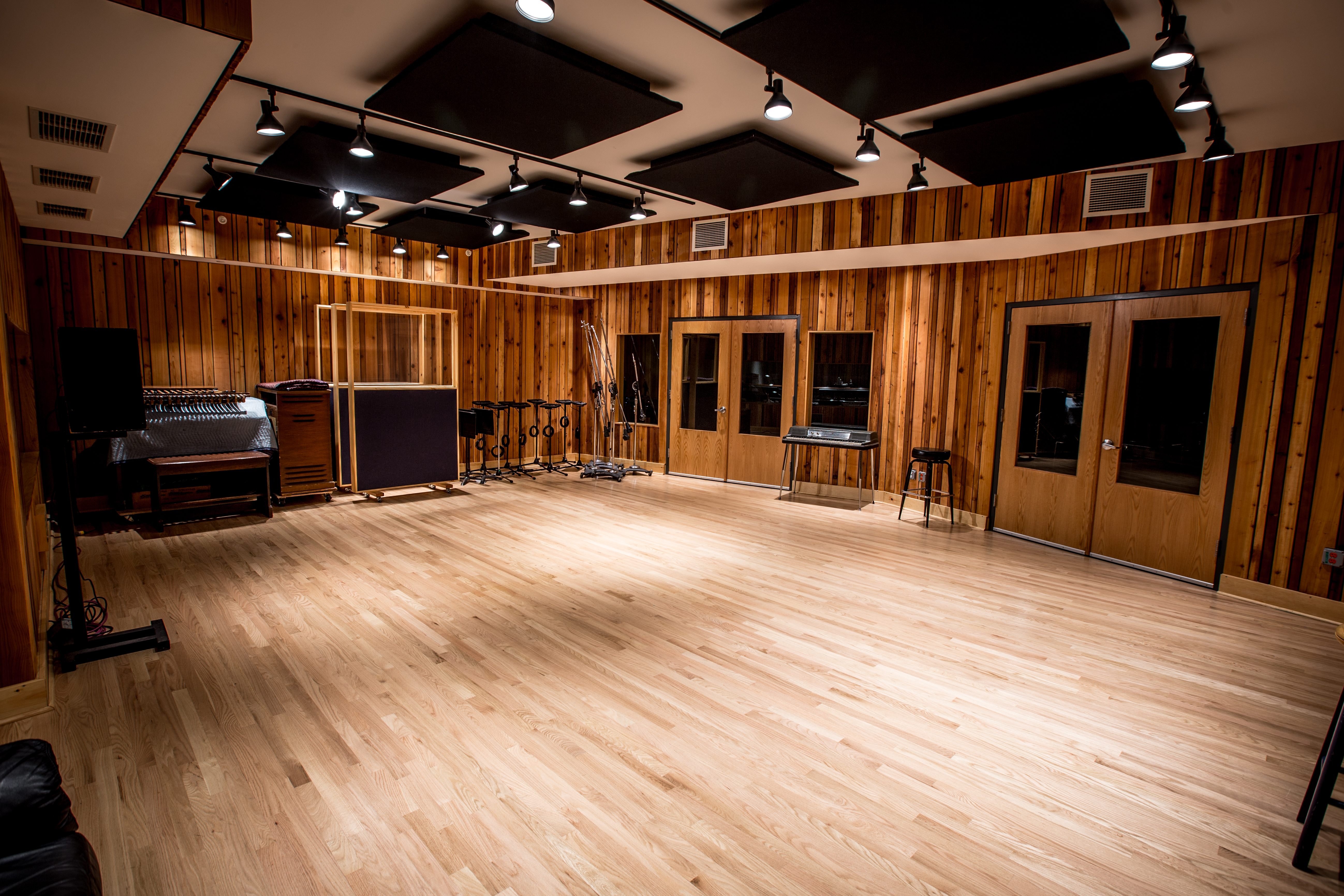
The new Sound on Sound is not the only major New York facility to move across the river to New Jersey. Mastering giant Sterling Sound recently left its Manhattan headquarters and relocated much of its operation to Edgewater, which is on the Hudson River near the George Washington Bridge. With real estate as expensive as it is in New York, there are likely to be more to follow.
Build Quality
Construction began at Sound on Sound’s Montclair location in the spring of 2017, and by December the facility was complete. It contains two main rooms: Studio A, which features a 1,250-square-foot live room with four iso booths, a Yamaha Concert Grand, a Neve VR console in the control room and much more. Studio B is a 600-square-foot live room with two iso booths, a Yamaha C7 Concert Grand and a Euphonix S5 console. Both control rooms have Augspurger three-way main monitors, along with Genelec 1031s, Yamaha NS-10s and a Genelec 1094 sub.
Related: Mix Blog Studio: Survival Strategy—Move to the Suburbs, by Mike Levine, June 26, 2018
In his effort to make the new Sound on Sound a leaner and meaner operation, Amlen opted for a smaller outboard gear collection than he’d had in his previous locations. He’s depending more on plug-ins, fully stocking both studios, with a special emphasis on the Universal Audio collection. Back when he was still in New York, Amlen says, he became sold on UAD.
“I started listening to them, and I said, ‘Oh my God. You don’t need racks of the stuff for mixing,” he recalls. “And most people, when they were tracking, were being very purist: mic pre into Pro Tools, and we’ll process it later.”
With the Neve and Euphonix consoles both having excellent mic pre’s, Amlen brought over just a small number of extra units, adding in some essential outboard gear. He brought over eight of his Neve 1081s.
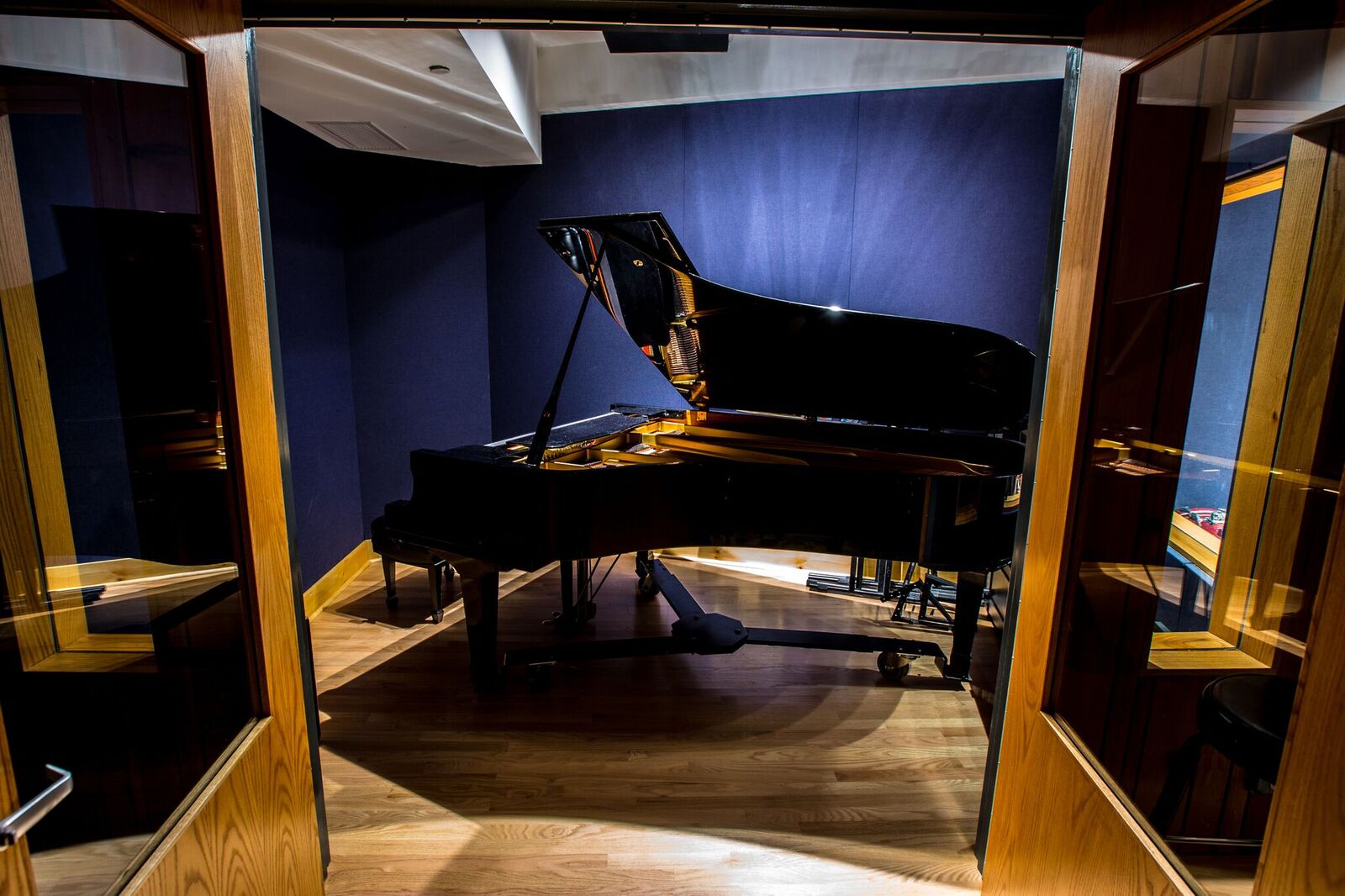
“I kept some other mic pre’s for flavor,” he says. “I kept a full dynamics rack. I literally said I wanted 12 channels of mic pre’s, EQ and compression. Different flavors, but 12 full channels of that in different permutations. But the console front-end mic pre’s are amazing in both rooms. I’ve engineered a couple of sessions every week since we’ve opened. Whether it was a single voice, a full ensemble, dozens of singers, multi-instruments, whatever it’s been, I’ve mostly relied on the mic pre’s on the console. Occasionally we’ll use the 1081s. The stuff sounds wonderful.”
Staffing Up
One of the smartest additions Amlen made was hiring veteran New York studio manager Tony Drootin, who came aboard while the facility was being finished. Drootin, who has years of experience managing major New York facilities like Sony Studios and Unique Recording, brought his considerable expertise to the project.
“Tony has always been among the very select, highly regarded studio managers who actually know what they’re doing,” Amlen says. “The clients love him, the studio ownership always loved him. So he’s a rare breed.”
Drootin has been a key figure not only in the day-to-day studio operations, but in helping to bring in business.
“We’ve had some great projects here,” Drootin says. “We’ve had a few from the city that actually were quite high-profile, including [Broadway actress] Renee Fleming with Leslie Odom Jr. from Hamilton and classical producer David Frost. We just had the Hell’s Kitchen Funk Orchestra with Bill Warfield, Blue Lou [Marini] and Paul Shaffer, which was a lot of fun to do. We’ve had a lot of local rappers. DMC lives in Wayne [a nearby town]. He’s a regular client of ours. We’ve had Billy Drummond, Billy Hart—you know, jazz legends. Jay Anderson. A lot of local jazz projects. A lot of local rock projects. We’re doing something with School of Rock in Montclair, we’re doing something with Jazz House Kids in Montclair.”
Drootin describes Sound on Sound as being diverse in both its capabilities and its client base. “We designed it to be quite formidable as a live-tracking facility,” he says. “Out here we have the luxury of having a larger space, and it sounds great and looks great. Our clientele is diverse. We have a podcast this weekend with nine participants. We’re doing larger scripted podcast series. We did a kids series. We’re starting to see more local podcast companies and individuals who are doing it.”
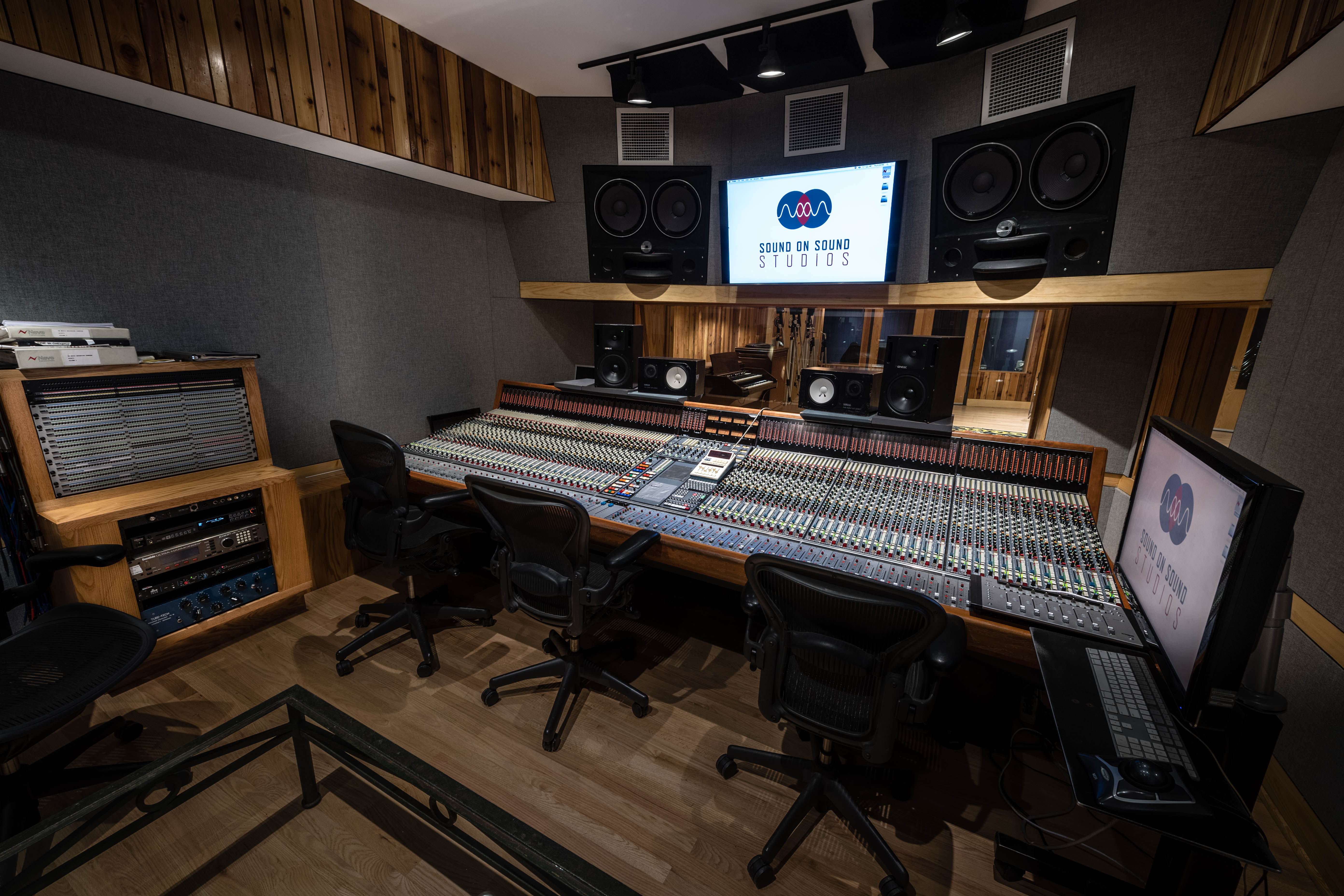
Due in no small part to the experience of Amlen and Drootin, Sound on Sound has the look and feel of a big-city facility, from the gold and platinum records on the wall to the large-format consoles and Augspurger monitors in the control rooms. When getting ready to leave, you almost expect you’ll be walking out into Midtown Manhattan.
“I carried over a lot of the things that made Sound on Sound a special facility and what made MSR a special facility up to the end,” says Amlen. “The rooms here are just a little smaller than they were at MSR. We’re literally talking about 5 feet on a dimension, give or take. And they’re also linked together with 48 mic or line-level tielines. We have two great sounding rooms that can link together, and we actually have a project later this month where we’re going to do that. It’s a big contemporary jazz ensemble recording where they really want to utilize strings in one room, horns in another, rhythm section here, vocalists there. Everybody at the same time, but isolated. There’s no place that I know of anywhere that can do that like we can.”
Want more stories like this? Subscribe to our newsletter and get it delivered right to your inbox.
Moving Forward
Despite all the great gear, well-designed rooms and highly experienced personnel, the idea of locating such a facility in the suburbs was definitely a gamble, and a high-stakes one at that. Would there be enough business to make it viable?
The answer is, it’s too soon to tell. Amlen has found the relocation surprising in some ways. “I really thought we were going to have a lot more of our New York base, and I didn’t expect that the local scene would provide us with much business,” Amlen says, “but the upshot is that it’s sort of been the reverse.”
“We look at it as the train is just getting rolling out of the station,” says Drootin. “We would like to see more. We’ve made a facility here that makes clients and artists in the New Jersey area realize that we’ve brought a New York commercial operation here, and they no longer have to go to the city. What we’re hoping to do is convince more people in New York that we are incredibly easy to get to. And that’s our challenge. Getting the New York business to realize that we can be extremely competitive rate-wise; we are very close, and have capabilities that rival some of the facilities that still exist in Manhattan.”
But Drootin thinks they made a smart bet that will pay off in the long term. “We look at it like we got in when the timing was right,” he says. “Because, quite honestly, it’s going to become unmanageable to do business monetarily in Manhattan, at least for recording facilities. You can’t continue getting your rent doubled while your rates are level.”

